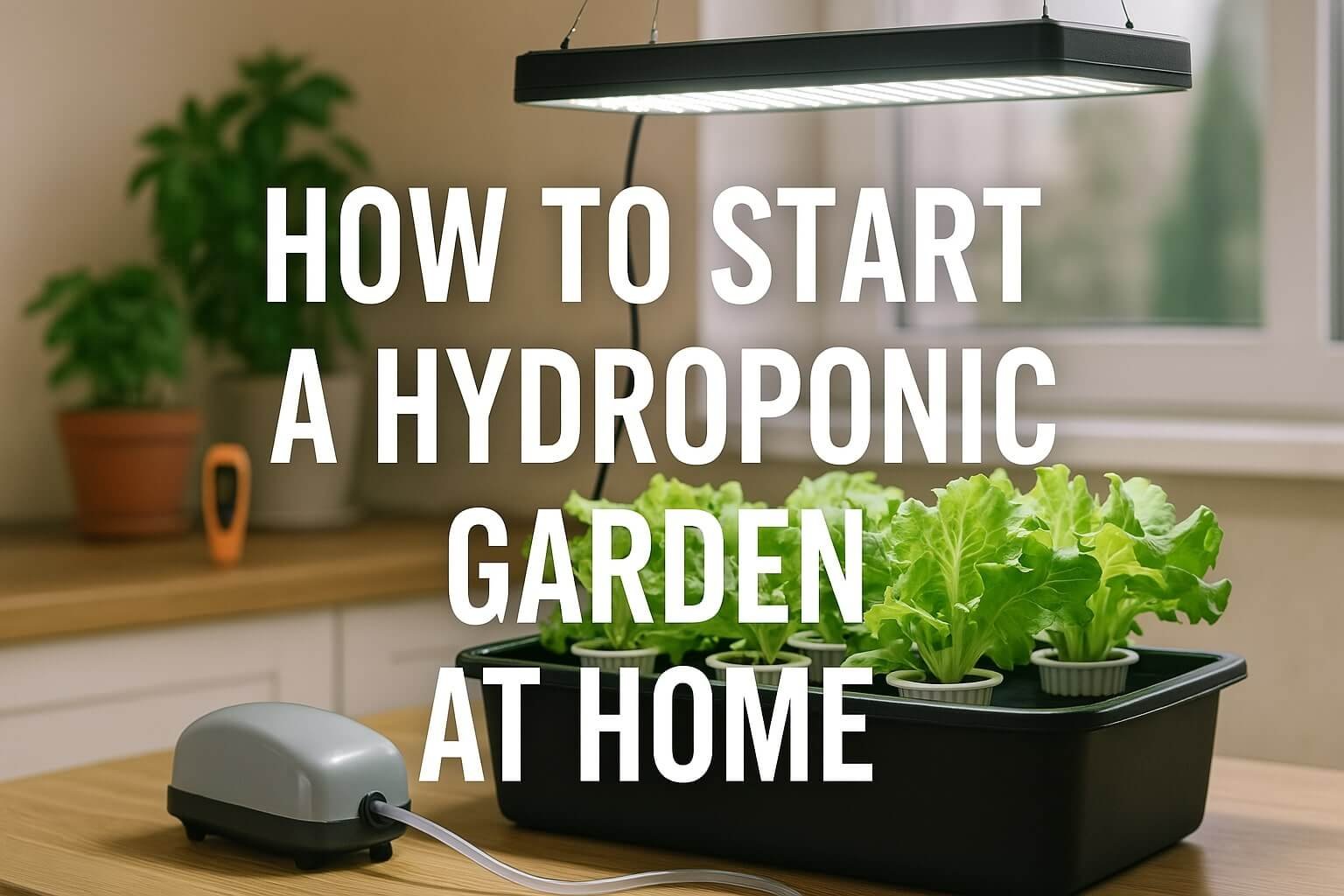🌿 Introduction
Hydroponic gardening is revolutionizing how we grow food. Whether you’re short on space, want year-round harvests, or simply love tech-savvy gardening, hydroponics offers a clean, efficient, and rewarding way to cultivate plants—without soil. In this guide, we’ll walk you through everything you need to know to start a hydroponic garden at home, even if you’re a complete beginner.
💧 What Is Hydroponic Gardening?
Hydroponics is a method of growing plants using nutrient-rich water instead of soil. The roots are suspended in a solution that delivers all the essential minerals directly, resulting in faster growth, higher yields, and fewer pests.
Benefits of Hydroponics:
- 🚫 No soil required
- 🌱 Faster plant growth
- 💧 Uses up to 90% less water
- 🪴 Ideal for small spaces and indoor setups
- 🌞 Year-round gardening
🛠️ Step-by-Step: How to Start a Hydroponic Garden at Home
1. Choose Your Hydroponic System
There are several types of systems, each with its own pros and cons:
| System Type | Best For | Complexity | Cost |
|---|---|---|---|
| Wick System | Herbs, microgreens | Low | Low |
| Deep Water Culture | Lettuce, spinach | Low | Low |
| Ebb and Flow | Tomatoes, peppers | Medium | Medium |
| Nutrient Film Tech | Leafy greens | Medium | Medium |
| Aeroponics | Advanced growers | High | High |
Pro Tip: Start with a Deep Water Culture (DWC) system—it’s simple, affordable, and perfect for beginners.
2. Select a Location
Pick a spot with:
- Access to electricity
- Stable temperature (60–75°F or 15–24°C)
- Good ventilation
- Natural light or space for grow lights
Indoor spaces like kitchens, balconies, or spare rooms work great.
3. Gather Your Supplies
Here’s what you’ll need:
- Water reservoir (bucket or container)
- Air pump and air stone (for oxygenation)
- Net pots and growing medium (e.g., clay pebbles, rockwool)
- Hydroponic nutrients
- pH testing kit
- Grow lights (LED recommended)
4. Prepare the Nutrient Solution
Mix hydroponic nutrients into water following package instructions. Maintain a pH level between 5.5 and 6.5 for optimal nutrient absorption.
5. Set Up Your System
- Place the air stone in the reservoir and connect it to the pump.
- Fill the reservoir with the nutrient solution.
- Insert seedlings into net pots with the growing medium.
- Suspend the pots so roots touch the water.
- Position grow lights 6–12 inches above the plants.
6. Choose the Right Plants
Start with easy-to-grow options:
- 🥬 Lettuce
- 🌿 Basil
- 🌱 Spinach
- 🍓 Strawberries
- 🌶️ Peppers
Avoid root vegetables like carrots or potatoes—they’re not ideal for hydroponics.
7. Monitor and Maintain
Check daily:
- Water level
- pH balance
- Nutrient concentration
- Light exposure
- Plant health
Change the nutrient solution every 2 weeks and clean the system monthly to prevent algae and disease.
🌼 Tips for Success
- Use timers for lights and pumps to automate care.
- Keep a gardening journal to track growth and issues.
- Start small and scale up as you gain confidence.
- Join online hydroponic communities for support and ideas.
❓ Frequently Asked Questions (FAQ)
Q1: Can I grow hydroponic plants without grow lights?
A: Yes, if you have access to strong natural sunlight. However, grow lights ensure consistent growth, especially indoors or during winter.
Q2: How much does it cost to start a hydroponic garden?
A: A basic setup can cost between $50–$150. Advanced systems may go up to $500 or more depending on size and automation.
Q3: What’s the best growing medium for beginners?
A: Clay pebbles and rockwool are great choices—they provide good aeration and moisture retention.
Q4: How often should I check the pH level?
A: Ideally, check it every 2–3 days. pH fluctuations can affect nutrient uptake and plant health.
Q5: Is hydroponic gardening organic?
A: Not always. While it uses fewer pesticides, the nutrients are often synthetic. You can opt for organic hydroponic nutrients if desired.





